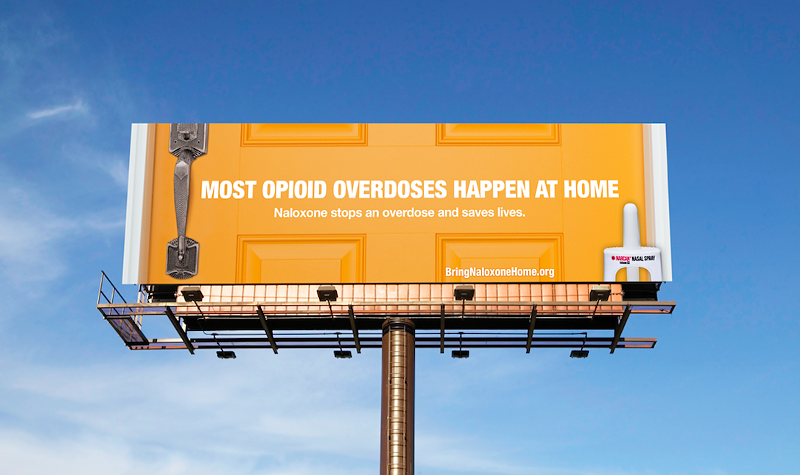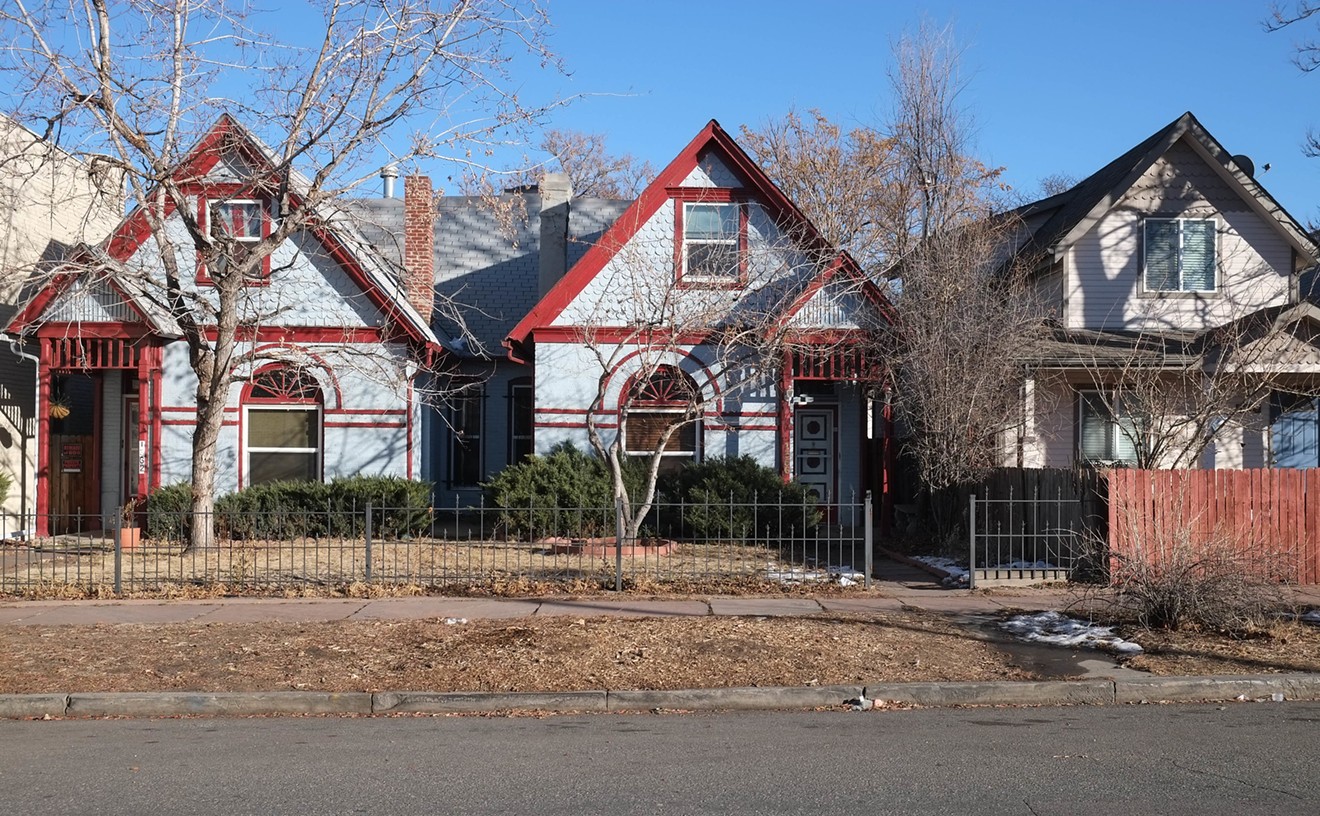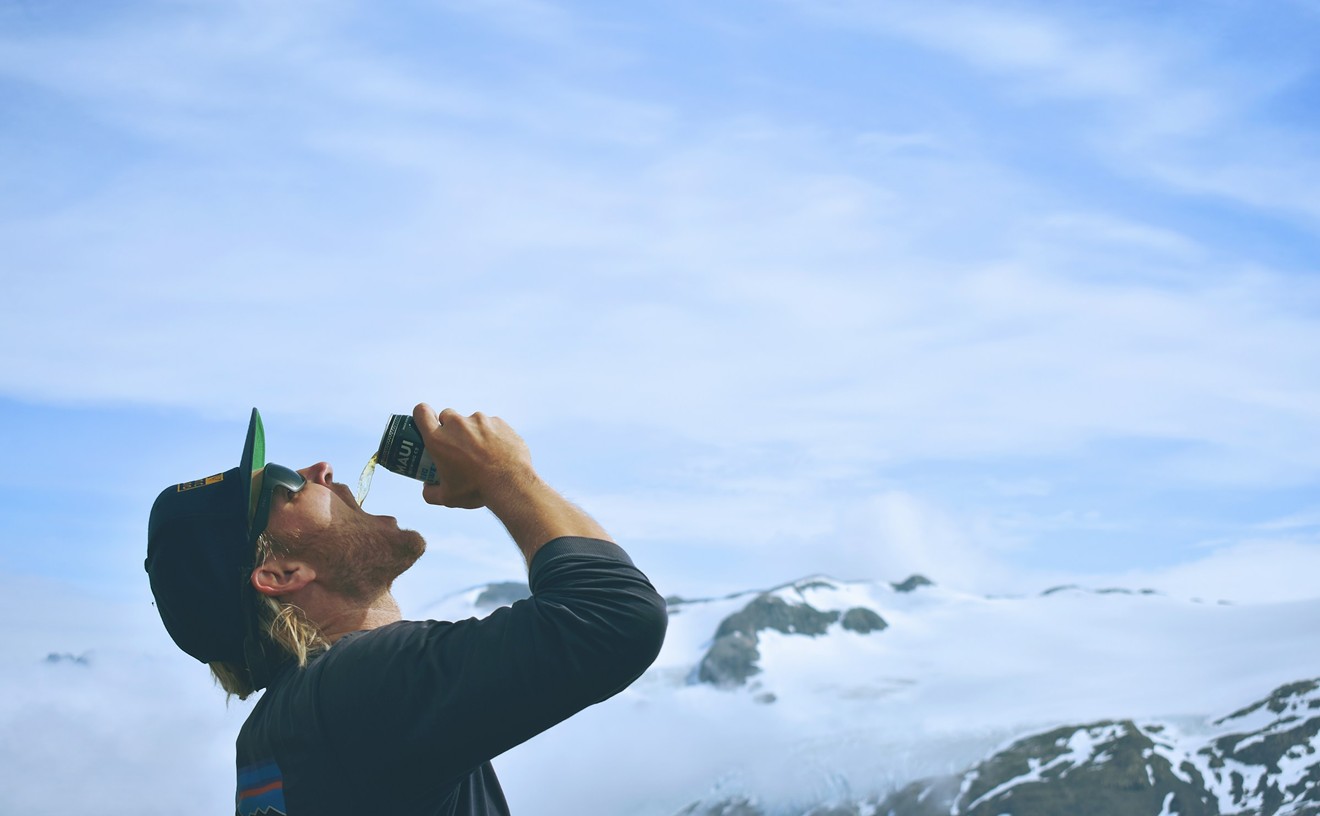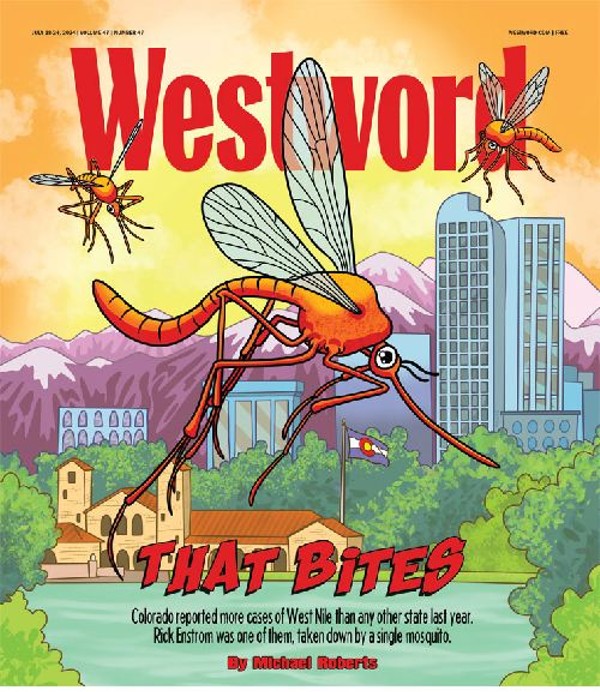A poorly understood but potentially life-saving drug is about to make an appearance on billboards, buses and social media throughout the state for the first time: naloxone, a medication that can immediately reverse an opioid overdose. The Colorado Consortium for Prescription Drug Abuse Prevention, a statewide task force charged with coordinating efforts to fight the opioid epidemic, kicked off a month-long campaign to tell Coloradans to “Bring Naloxone Home” on Thursday, August 1, at the State Capitol.
"The bottom line is, if you have opioids in your home or you know someone who uses them, you should have naloxone," said Dr. Robert Valuck, a professor at the Anschutz School of Pharmacy and the executive director of the consortium at the kick-off event.
Naloxone (brand name Narcan) has been around for decades, but has only recently become readily available to consumers. It's 99 percent effective, non-addictive, takes thirty seconds to learn how to administer, and costs $140 at full retail (but 93 percent of insurance companies cover it, according to Valuck). In 2016, the Colorado Department of Public Health and Environment issued a standing order that allows pharmacies and harm-reduction organizations to dispense the drug to anyone; a prescription is not needed. Over 500 pharmacies in the state claim to stock it, and any pharmacy is able to order it.
Naloxone is known as a key component to harm reduction, an umbrella approach to addressing substance-abuse disorders that focuses on, well, reducing harm. That gets it a lot of flak, though, from those who believe that giving people a drug that can save their lives only further "enables" them to abuse the drug.
Michael Miller, an Opioid Initiatives Coordinator for Jefferson County Public Health, counters that outlook. "I don't really think that naloxone enables much beyond breathing," he says.
"You can't reach recovery if you're dead," echoes consortium program manager Susanna Cooper.
Miller knows that all too well. He began using opioids at the age of fifteen and struggled with addiction for over a decade; in an all-too-familiar pattern, he became homeless, lost family and friends, and was arrested "more times than I can count."
"We've been conditioned since we were kids to think that people who use drugs are weak. That people who use drugs are to blame for their circumstances and that any consequences that result from their use are well-deserved even if that means death, and I internalized those sorts of thoughts," he says. "I believed that I deserved to die," he says of that period in his life. Three separate times, he almost did. Naloxone saved his life each time, twice at the hands of paramedics, and once by a friend. "It doesn't always stop people from using again, but it does often serve as a catalyst for change." Miller has been in recovery since 2014.
Other speakers at the event had similar stories. Kathleen Hernandez, a coordinator for Aspen Pointe, a community mental health center based in Colorado Springs, struggled with addiction herself, but never expected she would save a stranger's life. She told the story of randomly encountering a woman at a grocery store who had overdosed on heroin.
"Her lips and her fingernails are starting to turn blue," she described the scene, "she's on the ground, and all of a sudden you hear this horrific gargly breathing sound — it's called the death rattle — and she stopped breathing." Hernandez carries naloxone with her everywhere she goes. She gave the woman two doses via nasal spray and she quickly came to. "She was in such a nightmare that she was living with her own life she was absolutely amazed that somebody thought her life was worth saving," Hernandez says.
The current campaign is part of a growing but long overdue effort to fight the opioid epidemic with a harm-reduction outlook. Last year was the first in a decade that opioid deaths did not increase in the state; still, 543 Coloradans died from opioid overdoses. Naloxone plays a vital role in reducing that number. Since 2017, over 1,100 opioids overdoses have been reversed by family and friends or law enforcement using naloxone; over 4,000 have been reversed by EMS.
The goal of the campaign, according to Cooper, is both to increase awareness and reduce stigma. "I think that people who inject drugs are pretty well aware of naloxone, and are kind of in tune with what's necessary in order to prevent overdoses among peers, but people who are prescribed opioids for chronic pain are definitely not aware," she says. In a survey they conducted this year, only 30 percent of the general adult population in the state even knew what naloxone was.
Cooper stresses that it's not only people who are addicted to opioids that are at risk of overdose; anyone who has been prescribed opioids can accidentally overdose, especially if they are combined with other drugs or alcohol.
"People are afraid that if they go into a pharmacy and ask for it that they're going to be stigmatized or think that they have an opioid use disorder or something like that, and really, it's just another tool to have," Cooper says.
Along with the kickoff of the campaign, Governor Jared Polis signed a declaration proclaiming August 2019 "Naloxone Awareness Month." International Overdose Awareness Day is August 31.
[
{
"name": "Air - MediumRectangle - Inline Content - Mobile Display Size",
"component": "12017618",
"insertPoint": "2",
"requiredCountToDisplay": "2",
"watchElement": ".fdn-content-body",
"astAdList": [
{
"adType": "rectangle",
"displayTargets": "mobile"
}
]
},{
"name": "Editor Picks",
"component": "17242653",
"insertPoint": "4",
"requiredCountToDisplay": "1",
"watchElement": ".fdn-content-body",
"astAdList": [
{
"adType": "rectangle",
"displayTargets": "desktop|tablet"
},{
"adType": "rectangle",
"displayTargets": "desktop|tablet|mobile"
}
]
},{
"name": "Inline Links",
"component": "18838239",
"insertPoint": "8th",
"startingPoint": 8,
"requiredCountToDisplay": "7",
"maxInsertions": 25
},{
"name": "Air - MediumRectangle - Combo - Inline Content",
"component": "17261320",
"insertPoint": "8th",
"startingPoint": 8,
"requiredCountToDisplay": "7",
"maxInsertions": 25,
"watchElement": ".fdn-content-body",
"astAdList": [
{
"adType": "rectangle",
"displayTargets": "desktop|tablet"
},{
"adType": "rectangle",
"displayTargets": "desktop|tablet|mobile"
}
]
},{
"name": "Inline Links",
"component": "18838239",
"insertPoint": "8th",
"startingPoint": 12,
"requiredCountToDisplay": "11",
"maxInsertions": 25
},{
"name": "Air - Leaderboard Tower - Combo - Inline Content",
"component": "17261321",
"insertPoint": "8th",
"startingPoint": 12,
"requiredCountToDisplay": "11",
"maxInsertions": 25,
"watchElement": ".fdn-content-body",
"astAdList": [
{
"adType": "leaderboardInlineContent",
"displayTargets": "desktop|tablet"
},{
"adType": "tower",
"displayTargets": "mobile"
}
]
}
]












